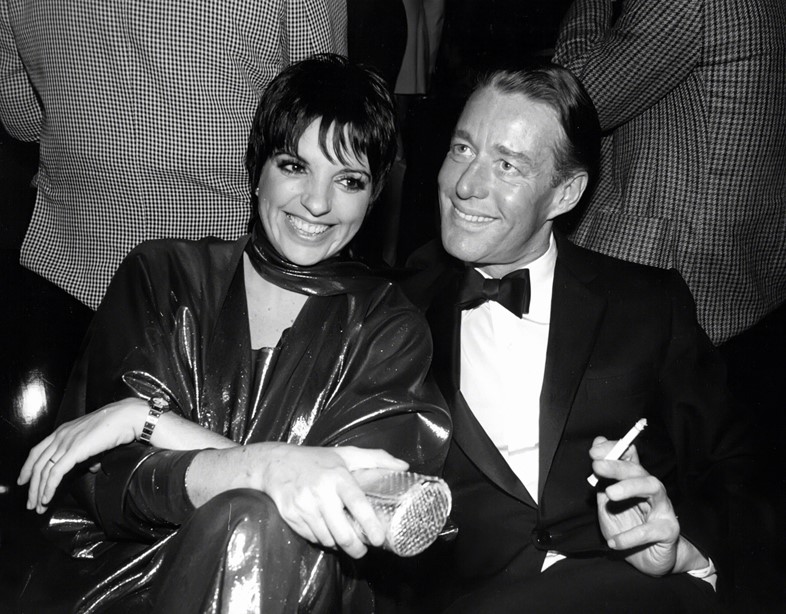Following the Netflix series on the late designer, interest in his life and work has piqued – and so it should have, for his impact on fashion is more relevant now than ever
There once was a time when high street collaborations with high end designers – Simone Rocha and Maison Margiela for H&M; Richard Quinn for Debenhams; Proenza Schouler, and Isaac Mizrahi for Target – were viewed as a dangerous business move. As the New York Times reported in 2019, in a feature on the lure of the drop sales model, Mizrahi was particularly nervous about teaming up with the American store in the early 1990s, due to Halston’s disastrous partnership with JC Penney just a decade or so before. “It was a very scary thing,” he said. “Halston was my idol at the time, and he had failed.” Mizrahi, however, did not, setting a precedent for subsequent alliances between the runway and retail chains that would follow in the years to come.
In 1981, when Halston’s first collection with JC Penny launched, a couturier – who had dressed the likes of Jackie Kennedy, Lauren Bacall, Liza Minelli, Elizabeth Taylor, and Greta Garbo, in slinky, sexy designs that would later inspire Tom Ford’s high octane glamour at Gucci – creating clothes for the ‘masses’ was entirely unprecedented. And although, as Mizrahi put it, Halston did indeed ‘fail’ at the time, he created a blueprint for fashion’s present – one which has largely been underestimated in the mainstream. However, Ryan Murphy’s Netflix biopic, starring Ewan McGregor as Roy Halston Frowick, has created renewed interested in the designer and his story – one which the five-part miniseries has been accused, by some, of over-sensationalising.

The Halston archives, run by the late designer’s niece Lesley Frowick, said of the show in an official statement earlier this month: “These people who didn’t know him well, perhaps because they were mere children during the Halston apogee, often like to focus on the most sensational parts of the story. Those details tend to be overinflated rather than placing the rightful emphasis on his incredible gift as an artist, the depth of his contribution to American fashion, his work ethic and his success as one of the first true American fashion influencers.” Frowick also points out that a 2019 documentary directed by Frédéric Tcheng, which like the series is also simply titled Halston, offers a deeper insight into the complexities of her uncle’s life – and his impact on fashion today. “[It] should be considered the comprehensive record of his story,” she said.
Certainly, for those curious to know more about the way in which Halston struggled to balance a brilliant creative mind with corporate interest as the economic boom of the 80s took hold, the documentary provides an almost forensic investigation. This includes several narratives around some rather insidious figures, such as Carl Epstein, who became the managing director of the Halston brand in 1983. The film also muses on the sale of Halston’s name and the inextricable link that was forged between man and brand, alongside investigating the toll that can take on a person. Tcheng spoke to Another Man at the time of its release. “I was at a point in my career where I had so much interaction with the corporate world and those interactions could be very painful and traumatic,” he said. “As a creative person, you’re faced with the wall of corporate interest – and those people speak an entirely different language. In the fact that Halston lost control of his company in the 1980s, I saw a story that would allow me to investigate this socioeconomic change from the point that Ronald Reagan came into power and deregulated the financial markets. Halston was almost the first casualty. And this is the world we still live in today.”
![Liza Minnelli; Andy Warhol; Halston; Jack Jr. Haley [& Wife]](https://images-prod.anothermag.com/786/azure/another-prod/400/9/409215.jpg)
Halston died of cancer relating to Aids complications in 1990 at the age of 57. As Murphy’s series documents, one of Halston’s last projects was designing the costumes for his friend and longtime collaborator Martha Graham’s ballet Persephone. Halston, who had a fractured relationship with the media, is depicted after the show as secretly enjoying the positive press his work received, before tearfully exclaiming with a smile, “reviews don’t matter.” Whether this incident is true or embellished, it isn’t difficult to imagine that if he had lived to see what fashion has shaped out to be in 2021, if he would feel a similar vindication in some of his business decision making. Such ambition, however misguided, was arguably too ahead of its time.
Today, designers continuously grapple with the balance of creative necessity versus corporate power. Sometimes this balance is achieved to great success; other times not. But it’s embedded in the mechanics of the industry. In an age where the names of fashion houses outlive their founders, and crafting a presence on social media is a personal branding exercise in itself, Halston’s story feels particularly prescient, whether viewed as a cautionary tale, or one of great foresight – or perhaps, both.
